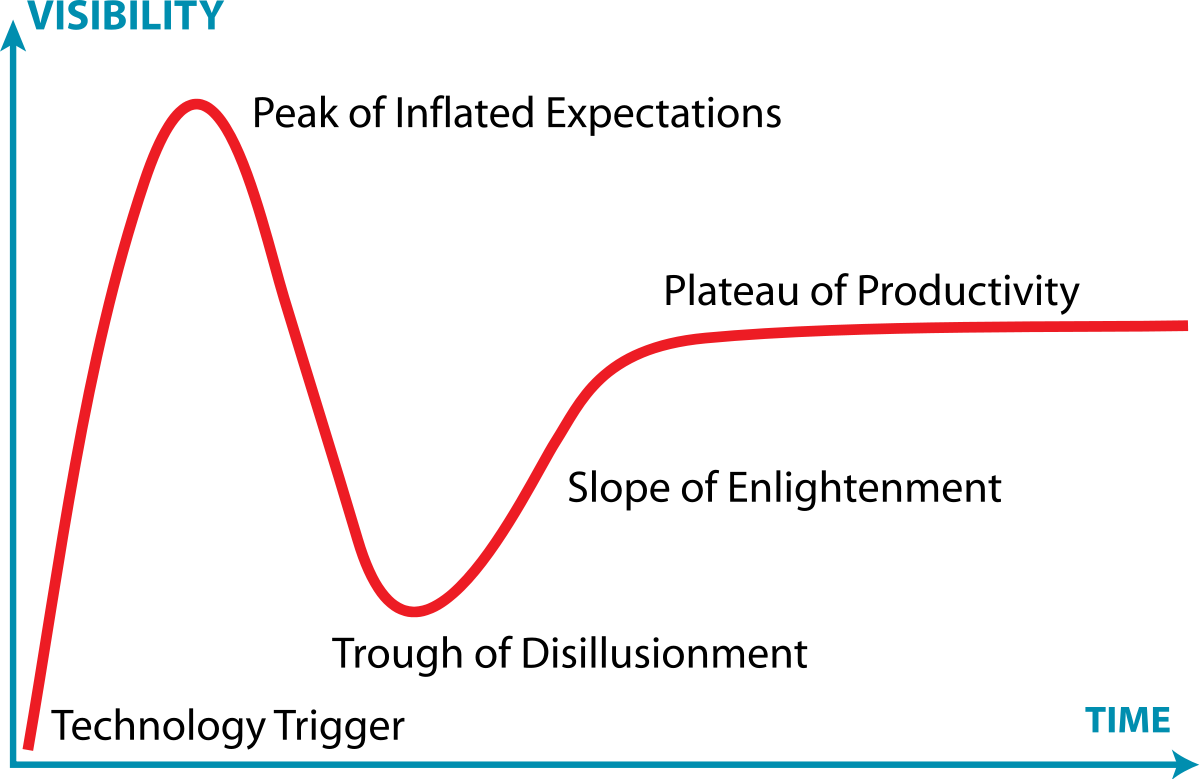26 of the 48 state Medicaid agencies studied could not report the number of “critical incidents” — such as abuse, neglect or exploitation.
You are here
Did you miss one? Note February posts about AI, tech support and aging in place

February – that’s when the 2023 AI hysterical hype cycle went into full gear. You know a topic is important when leading media sites like the New York Times and Wall Street Journal become irrational and contribute to the general cacophony – even offering up worries from, wait for it, Henry Kissinger and Eric Schmidt – Kissinger is 98, but apparently still trying out new software tools. Eric Schmidt was former CEO of Google – he should be worried. But the article ChatGPT Heralds an Intellectual Revolution was the whipped cream on top of icing on the cake. Its subtitle: "Generative artificial intelligence presents a philosophical and practical challenge on a scale not experienced since the start of the Enlightenment." Really.
The hype of aging in place. The articles and tech industry focus on aging in place and fear. And it’s not unlike the 'I’ve Fallen and I can’t Get Up' fear. AARP fuels it with survey results (77% of the 50+ want to age in place). Free-lance writers follow up with an Aging in Place story citing the survey. The hype capitalizes on the recent CES with a laundry list of tech offerings that could help with fears -- like sensors, medication management, motion sensors, and smart watches to mitigate fear of falling. And AARP helps add brand recognition to the term 'Age Tech' with a collaborative of companies at the Nexus of Longevity and Technology to deal with health issues and mitigate fear. Read more.
Can tools like ChatGPT and DALL-E be helpful to older adults? Of course, in the ways they can be helpful to any adult. The simple examples – retrieval of information and generated images seem very different from traditional (ad-driven) search tools. Given the early user base of ChatGPT (optimizing language models for dialogue), 100 million within the first few months, clearly developers, investors, and consumers agree. And multiple other companies are jumping into the market, perhaps playing catchup with early entrants. DALL-E (creating images from text captions) and other generative AI tools have become, uh, visible, and perhaps really useful in film-making and video game development. But how will this category be applied in the older adult marketplace, either directly or for those who serve them? To be tackled in an upcoming report, The Future of AI and Older Adults, being researched now. Read more.
The Tech Support Chasm – Tough to cross for older adults. Parks Associates' update this week is illuminating. In offering up a chart and commentary about tech in the 'connected' home, people returning products note their trouble and aggravation. In addition, half of all households reported difficulty in setting up their Wi-Fi network (see Figure 1). Consider the first 3 reasons for returning (installation, learning features, configuring settings). Those reading this blog can look around their own home – noting the growing complexity of a Wi-Fi network, smartphone, smart speaker, or in some homes a smart doorbell, thermostat, refrigerator – or a too-smart car. Aside from returning a product that is baffling to deal with, what should people, not just older adults do as new products proliferate -- maybe 6 (or 26) more devices in the home, what will they do? Read more.
AI and the Internet of Caring Things. These two letters, AI, have risen to top of tech talk and media minds. A quick search reveals near hysteria in the media and near panic among leading tech firms. And even the Federal Trade Commission is wary of the current hype and AI-powered marketing claims. Experts warn about the need for ‘guardrails’ against tools giving inappropriate answers, and they worry about ethics to underpin the answers of tools like ChatGPT. So as a result, tech firms want you to know that they are working on appropriate fixes. As is typical of hype cycles, initial innovation is viewed as astounding, followed by efforts to break or downplay it. Which means it will become very useful. Read more.
[Note: Please see the 2023 updated Market Overview Technology for Aging]

Comments
From Josh Kelley via LinkedIn
Real world experience from clinicians familiar with aging adults seems like an untapped resource for tech. Great analysis again on your part!